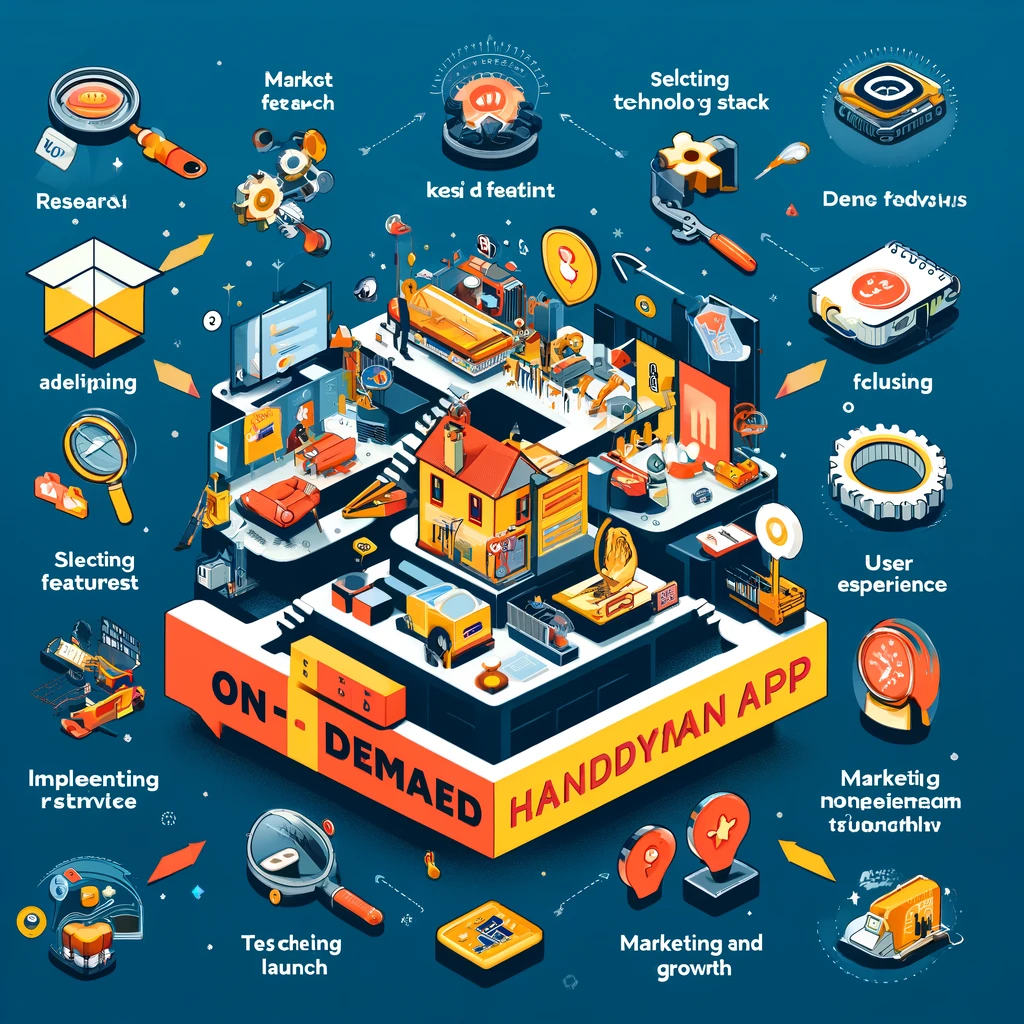Guide to Develop an On-demand Handyman App
Developing an on-demand handyman app can revolutionize how people manage home repairs and maintenance, offering convenience, efficiency, and reliability. This guide will walk you through the essential steps and considerations for creating a successful handyman app development, focusing on critical areas such as market research, features, technology stack, user experience, monetization strategies, and launch and marketing.
Table of Contents
ToggleUnderstanding the Market
The first step in developing an on-demand handyman app is conducting thorough market research. This involves understanding your target audience’s needs, preferences, and pain points. Identify the services most in demand, such as plumbing, electrical work, carpentry, and general maintenance. Analyze your competitors to understand their offerings, strengths, and weaknesses. This insight will help you differentiate your app and fill any gaps in the market.
Key Features to Implement
Your app should offer a seamless and efficient experience for both service providers and users. Essential features include:
- User Registration/Login: Easy registration or login via email, phone number, or social media.
- Profile Management: Users and service providers can manage their profiles, showcasing skills, services offered, and ratings.
- Service Listing: A detailed listing of available services for users to browse.
- Booking and Scheduling: Users should be able to book services immediately or schedule them for a later time.
- Real-Time Tracking: Enables users to track the handyman’s location and estimated time of arrival.
- Payment Gateway Integration: Secure payment options for users to pay for services directly through the app.
- Ratings and Reviews: Allow users to rate and review services, ensuring trust and quality.
- Push Notifications: Keep users updated on their booking status, special offers, and more.
Choosing the Right Technology Stack
The technology stack is critical for app performance, scalability, and maintainability. Consider the following technologies:
- Frontend: React Native or Flutter for cross-platform app development, ensuring a consistent user experience on both Android and iOS.
- Backend: Node.js or Ruby on Rails for a robust and scalable server-side solution.
- Database: MongoDB or PostgreSQL, depending on your needs for flexibility and data structure.
- Payment Processing: Stripe or PayPal for secure and reliable payment transactions.
- Real-Time Analytics: Firebase or Google Analytics for tracking user engagement and app performance.
Prioritizing User Experience (UX)
The success of your app heavily relies on its usability and design. Ensure your app has a simple, intuitive, and engaging user interface (UI). Pay attention to the app’s navigational flow, speed, and responsiveness. Incorporate feedback mechanisms to continuously improve the UX based on user suggestions and complaints.
Monetization Strategies
Determining how your app will generate revenue is crucial. Common monetization models for on-demand handyman apps include:
- Commission Model: Charging service providers a fee for each booking made through the app.
- Subscription Model: Offering premium features to users or service providers for a monthly or yearly fee.
- In-App Advertisements: Displaying ads within the app, ensuring they are non-intrusive and relevant to your audience.
Testing and Launch
Before launching, thoroughly test your app for bugs, performance issues, and user experience. Conduct beta testing with a small group of users to gather feedback and make necessary adjustments. Once testing is complete, plan your launch strategy. This includes choosing the right time to launch, creating a marketing plan, and preparing for customer support.
Read More: Buy Ready Made Android & IOS Application In India
Marketing and Growth
A solid marketing strategy is essential for attracting users to your app. Utilize social media, content marketing, search engine optimization (SEO), and paid advertising to raise awareness. Partner with local businesses or influencers to reach a broader audience. Offer promotions or discounts to new users to encourage downloads and usage.
Continuous Improvement and Scaling
After launch, continuously monitor user feedback, app performance, and market trends. Use this data to improve your app, add new features, and refine your services. As your user base grows, ensure your app can scale to meet increased demand without compromising performance.
Conclusion
Developing an on-demand handyman app requires careful planning, a clear understanding of your target market, and a focus on delivering an exceptional user experience. By following this guide, you can create an app that not only meets the needs of your users but also stands out in a competitive market. Remember, success lies in continuous improvement and adaptation to changing user needs and technological advancements.







